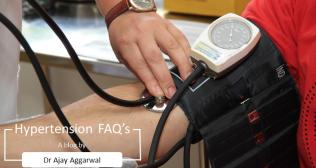
Link Between Diabetes and Tuberculosis (TB)
Diabetes and tuberculosis (TB) are two major global health concerns that interact in complex ways. While TB is an infectious disease caused by Mycobacterium tuberculosis, diabetes is a chronic metabolic disorder characterized by high blood glucose levels. When occurring together, they present significant public health challenges. The intersection of these conditions is particularly concerning in low- and middle-income countries, where both diseases are prevalent. Understanding the link between diabetes and tuberculosis, identifying hidden health threats, and implementing effective prevention and management strategies are crucial steps toward mitigating their combined impact.
The Link Between Diabetes and Tuberculosis
Individuals with diabetes are at a higher risk of developing active TB compared to those without diabetes. This increased susceptibility is primarily due to the compromised immune system associated with chronic hyperglycemia, which impairs the body's ability to combat infections. Studies have shown that diabetes can increase the risk of active TB disease by two to three times. Additionally, diabetes causes chronic inflammation and reduces the body's ability to control bacterial infections, increasing the likelihood of latent TB becoming active.
Conversely, TB can adversely affect glycemic control in individuals with diabetes, creating a bidirectional relationship that complicates the management of both diseases. The inflammatory response triggered by TB can lead to insulin resistance, making blood sugar levels harder to control. It can also trigger the release of stress hormones like cortisol, which may impair blood glucose levels.
Hidden Health Threats
1. Delayed Diagnosis: The symptoms of TB and poorly controlled diabetes can overlap, leading to delays in the diagnosis of both conditions. For instance, weight loss and fatigue are common in both diseases, which may result in misdiagnosis or delayed treatment.
2. Increased Severity of TB: Diabetes can lead to more severe manifestations of TB, including a higher bacterial load and more extensive lung damage. This severity can result in prolonged infectiousness and increased transmission rates.
3. Drug Interactions: The concurrent treatment of TB and diabetes requires careful consideration of potential drug interactions. For example, rifampicin, a key TB medication, can reduce the effectiveness of certain oral hypoglycemic agents, necessitating adjustments in diabetes management.
4. Multidrug-Resistant TB (MDR-TB): Diabetes has been associated with an increased risk of developing MDR-TB. The exact mechanisms are not fully understood, but factors such as impaired immune response and potential delays in TB diagnosis and treatment among diabetic patients may contribute to this risk.
The World Health Organization (WHO) recommends a collaborative approach where TB patients are screened for diabetes and vice versa. Healthcare providers should be trained to recognize and manage both diseases together. Early detection, proper treatment, and integrated healthcare approaches are essential for managing both conditions. Addressing this dual epidemic requires a multidisciplinary approach.
Categories
Clear allMeet the doctor

- Diabetology/Endocrinology | Diabetology/Endocrinology | Endocrinology
-
13 Years
-
1000



















